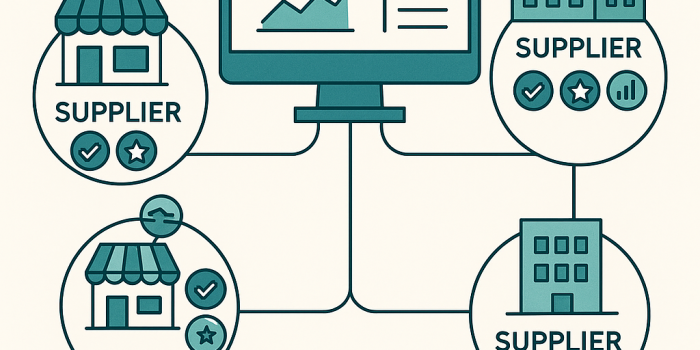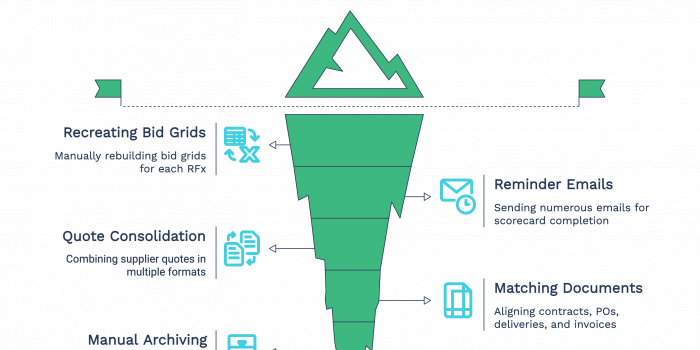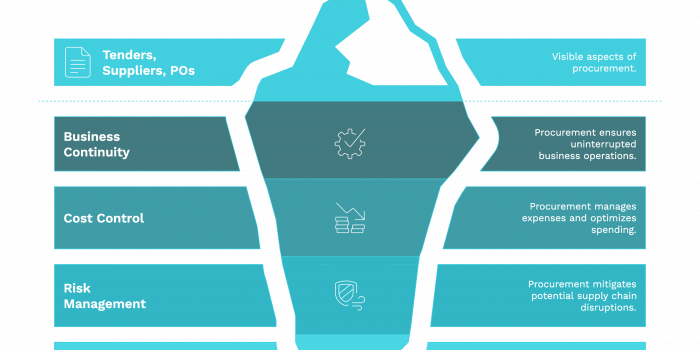Micromanagement in Procurement: Why It Happens, Red Flags to Watch For, and How Scale Helps
Procurement and supply chain functions are inherently complex, involving multiple stakeholders, large budgets, regulatory oversight, and tight timelines. Because of this high-stakes environment, procurement leaders often feel pressured to ensure that nothing goes wrong. That pressure, while understandable, can manifest as micromanagement — a leadership style that prioritizes control over

Procurement and supply chain functions are inherently complex, involving multiple stakeholders, large budgets, regulatory oversight, and tight timelines. Because of this high-stakes environment, procurement leaders often feel pressured to ensure that nothing goes wrong.
That pressure, while understandable, can manifest as micromanagement — a leadership style that prioritizes control over collaboration, oversight over empowerment. In practice, micromanagement creates delays, crushes innovation, and leads to high employee turnover.
So why does micromanagement happen? What does it look like in procurement settings? And more importantly, how can Scale help fix and prevent it?
Why Micromanagement Starts in Procurement
Micromanagement often stems from good intentions: the desire to maintain standards, avoid mistakes, or meet compliance goals. However, several root causes turn that desire into a destructive management style:
1. Lack of Visibility
Managers can’t see progress, so they constantly ask for updates.
Scale’s Fix: Real-time dashboards, activity tracking, and automated updates provide instant visibility into procurement workflows.
2. Fear of Mistakes or Non-Compliance
Procurement errors can be costly, so leaders impose extra approvals and scrutiny.
Scale’s Fix: Approval thresholds, audit trails, and role-based permissions ensure compliance while empowering teams.
3. Unclear Roles and Responsibilities
When tasks aren’t well-defined, leaders feel they must manage everything.
Scale’s Fix: Role-based access and clear workflow assignments ensure everyone knows what they’re responsible for.
4. Lack of Trust in Team Capability
Leaders question whether their team can make the right decisions.
Scale’s Fix: Standardized templates, guided evaluations, and training tools boost consistency and confidence in execution.
5. Manual, Disconnected Processes
Using spreadsheets, emails, and WhatsApp leads to disorganization and control issues.
Scale’s Fix: A centralized, digital platform streamlines and automates the entire procurement lifecycle.
6. Control-Oriented Culture
Some organizations reward control over innovation, discouraging independent thinking.
Scale’s Fix: Structured autonomy — giving team members room to act within clear boundaries — helps shift the culture from control to collaboration.
12 Micromanagement Red Flags in Procurement
Based on real-world observations, here are signs your procurement team may be operating under micromanagement:
| Red Flag | What It Looks Like in Procurement |
|---|---|
| 1. Constant Oversight | Leaders frequently demand updates and check-ins. |
| 2. Lack of Autonomy | Team members must seek approval for every decision. |
| 3. Over-Detailed Instructions | Rigid directions that leave no room for innovation or supplier input. |
| 4. No Trust in Team | Managers question or redo every task completed. |
| 5. Frequent Interruptions | Work is constantly disrupted by progress inquiries. |
| 6. Limited Delegation | Tasks are hoarded instead of assigned to others. |
| 7. Focus on Minor Details | Trivial concerns overshadow strategic priorities. |
| 8. Little Room for Innovation | New ideas are discouraged or ignored. |
| 9. Overload of Approvals | Even routine tasks require several sign-offs. |
| 10. Discouragement of Initiative | Employees are penalized for acting without permission. |
| 11. Fear of Mistakes | Team members operate in fear of being blamed. |
| 12. High Employee Turnover | Talented staff leave due to low morale and over-control. |
How Scale Solves and Prevents Micromanagement
Scale is a web-based e-procurement solution built to help organizations digitize and simplify procurement and supply chain processes. But more than that, it’s a system that replaces the need for micromanagement by providing structure, transparency, and trust.
Here’s how Scale addresses both the symptoms and the root causes of micromanagement:
| Micromanagement Challenge | How Scale Solves It |
|---|---|
| Lack of real-time visibility | Live dashboards and status trackers |
| Fear of non-compliance | Built-in audit logs and automated approval flows |
| Unclear responsibilities | Role-based permissions and task assignments |
| Manual processes | Centralized, automated procurement workflows |
| Innovation stifled | Custom templates and guided flexibility |
| Employee turnover | Empowerment, clarity, and reduced administrative load |
The Scale Effect: Prevention, Not Just a Cure
Micromanagement is often a symptom of broken systems, not broken people. In procurement, where the cost of error feels high, control feels like the safest path. But in reality, empowered teams, clear processes, and real-time visibility lead to better outcomes.
Most tools address the symptoms of micromanagement (like too many approvals or long email threads). Scale goes deeper by addressing the root causes:
- Clarity through structure
- Trust through transparency
- Speed through automation
- Confidence through compliance
By aligning people, processes, and technology, Scale enables procurement teams to work confidently and independently, reducing the impulse — and the need — to micromanage.








